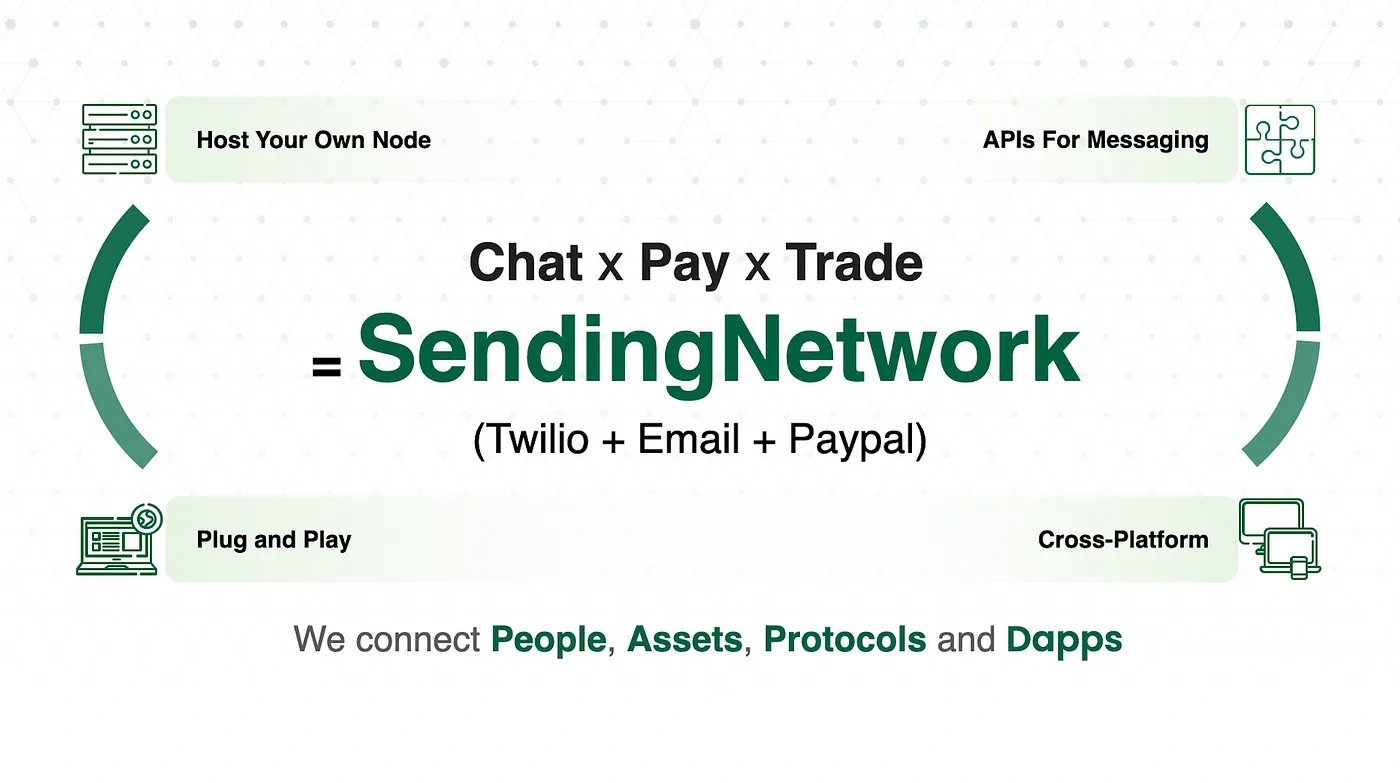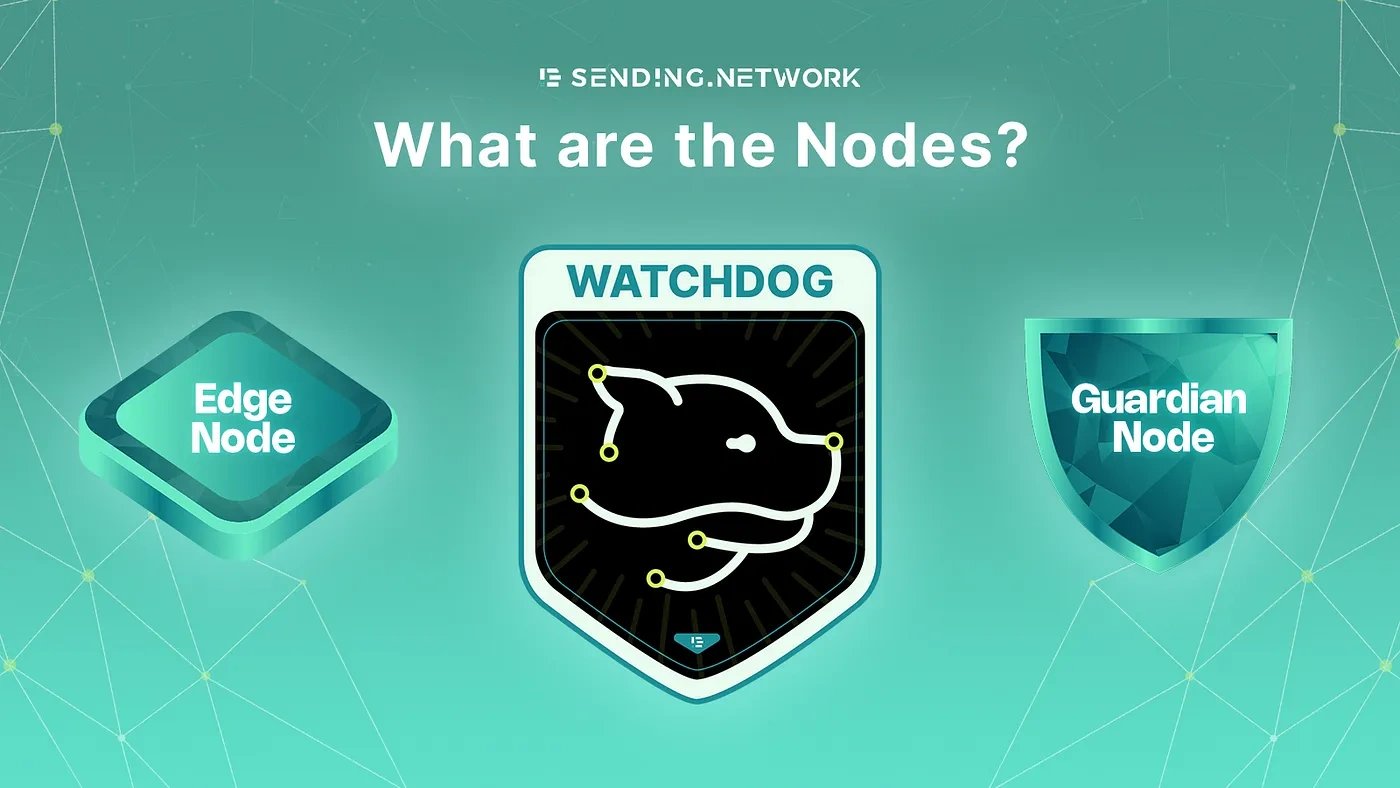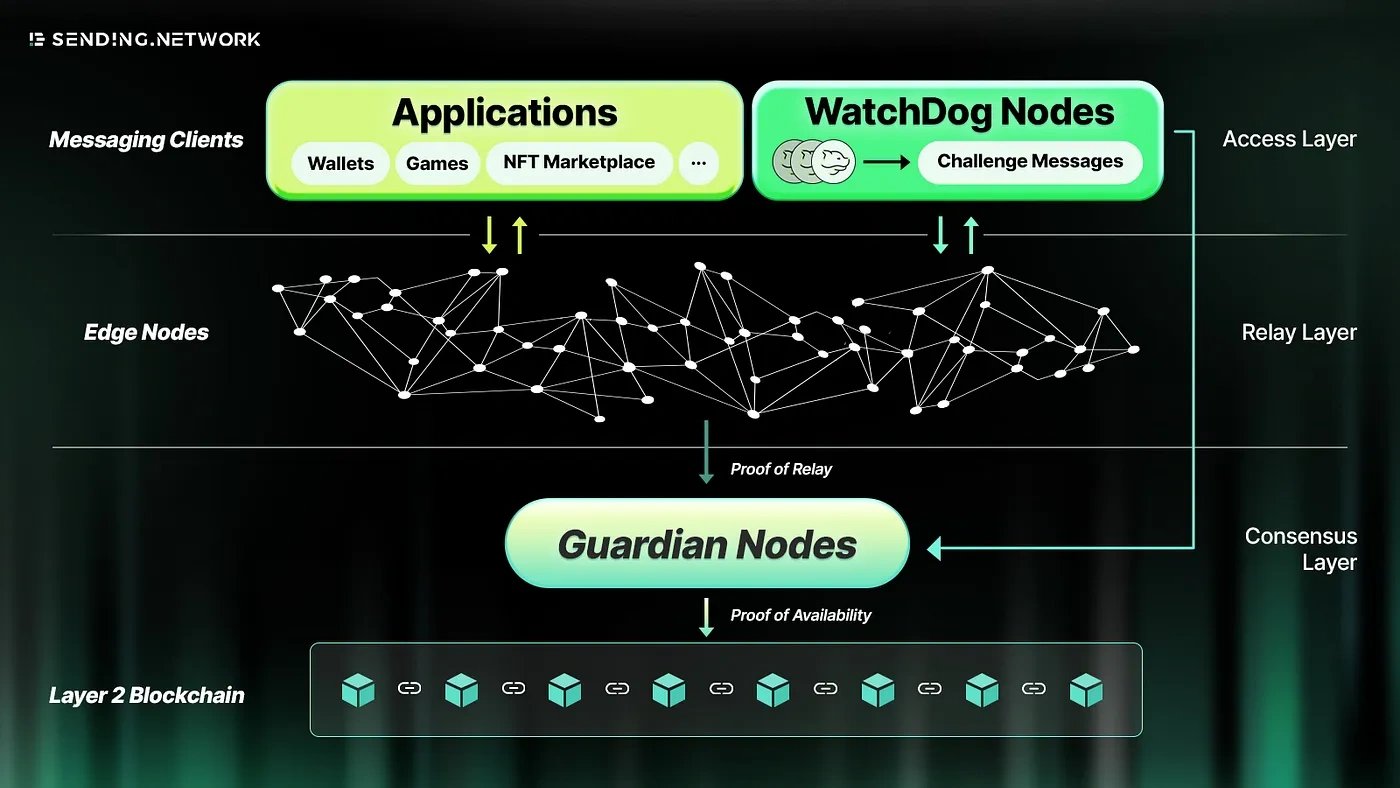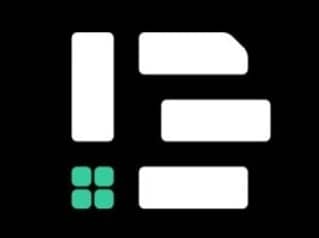Subscribe to wiki
Share wiki
Bookmark
Sending Labs
Sending Labs
Sending Labs is a decentralized communication platform that enhances Web3 interactions through secure, peer-to-peer technology. It offers a range of tools for messaging, voice, and video communication, empowering users with privacy and control over their data. [1]
Overview
Sending Labs envisions a communication system where users can securely interact, send payments, and trade assets directly within chat platforms. As a product studio focused on decentralized, interoperable communications infrastructure, it aims to provide users with enhanced privacy, data control, and seamless integration between wallets and apps. Its first products, SendingNetwork and SendingMe, demonstrate this approach to Web3 social networking. [2]
Products
SendingNetwork
SendingNetwork is a decentralized, encrypted communication infrastructure that supports messaging and token or NFT trading across applications. It provides a full-stack experience with a peer-to-peer network, a decentralized identity system, end-to-end encryption, and an API system for interacting with Dapps and smart contracts. Supported by a high-performance Edge Network, the system handles secure messaging, even in large group chats, and its customizable SDK allows developers to tailor features to their needs. Its architecture includes a Client tier for secure data storage, an Edge Network for message relay and caching, and a Blockchain Core for managing user registration and incentivizing network miners. Proof of Relay and Proof of Availability mechanisms ensure efficient and reliable network performance. [2][3]

Communication
SendingNetwork provides communication tools to enhance user interaction and engagement across applications. It supports end-to-end encrypted text messaging for private and group chats using peer-to-peer technology, ensuring secure communication without relying on centralized servers. The platform extends to voice and video calls with P2P infrastructure, live streaming, and AMA features, integrating cryptocurrency transactions and smart contracts. Developers can also access interactive streaming, dynamic marketing tools, and analytics dashboards, creating secure, engaging, and flexible communication opportunities within Web3 applications. [4]
Social Graphs
Sending.Network (SDN) is a blockchain-based social network that prioritizes user control over data, privacy, and security, utilizing Zero Knowledge Proof (ZKP) technology. Users manage their contact lists, social connections, and interactions through decentralized storage options like IPFS, backed by the blockchain if desired. SDN's social network includes "Squads," digital communities where users with shared interests can chat, share media, and trade within a decentralized environment. Three types of squads are available: Public, Private, and NFT Squads, the latter requiring an NFT token pass for access, giving users ownership of their squad relationships. [5]

SendingMe
SendingMe is an encrypted and decentralized instant messaging app built on SendingNetwork. It is designed to meet community needs, such as token-gated chats or facilitating trades directly within conversations. It combines elements from both Web2 and Web3 messaging platforms, offering an intuitive interface for seamless communication and transactions and serving as a ready-to-use toolkit for Web3 teams. [2][6]
Wakey Whale
Wakey Whale is SendingMe's Telegram mini-app, where players earn game coins by tapping to keep a whale awake. Users can gain coins through tapping, completing quests, or leveling up, with additional rewards for inviting friends. Features include daily tap-to-earn mechanics, quests for accessory rewards, leaderboards tracking top players, and a bonus system for inviting friends. Players can also customize their whale with accessories created in partnership with brands like Bounty Bay and DIN. [7]
Edge Router A1
The Edge Router A1 enables users to share unused household bandwidth through SendingNetwork's decentralized communication protocol, reducing dependence on centralized data centers. With a Qualcomm quad-core processor, WiFi 7, and a 2.5Gbps multi-gigabit interface, it facilitates decentralized mining, allowing users to earn income by sharing bandwidth. This device represents a step toward decentralized home networks, merging improved network performance with income-generating potential. [8]
Features
Proof of Relay
Sending Network's Proof of Relay is a consensus mechanism designed to ensure decentralized communication without the need for third-party permissions. It operates independently using algorithms and validation protocols to facilitate message transmission with Proof of Availability, which continuously submits information to the blockchain. This mechanism supports network decentralization by allowing anyone to participate in relay nodes without centralized approval and adjusts node incentives to maintain network sustainability. Together with Proof of Availability, Proof of Relay ensures transparency and verifiability for Web3 transactions and communications. [9]
Proof of Availability
Proof of Availability is a consensus mechanism in SendingNetwork that supports network sustainability by allowing Edge nodes to engage in staking activities to generate and verify blocks, ensuring the network's security and stability. Validators, selected from Edge nodes, process transactions such as token transfers and smart contract executions, verifying their legality and preventing issues like double-spending. This system strengthens network security while addressing the challenges of decentralization in Web3 social communications and transactions, giving users greater control over their data. [10]
Nodes

SendingNetwork operates with three types of nodes, each playing a specific role in maintaining the network. Edge Nodes are responsible for relaying and temporarily storing messages and are rewarded similarly to miners in other networks. WatchDog Nodes monitor Edge Nodes to ensure they function correctly, issuing reports if problems arise. Guardian Nodes oversee the work of both Edge and WatchDog Nodes, assisting with transaction processing and maintaining network operations. This structure ensures reliable message delivery, security, and rewards for participants. [11]
Edge Nodes
Edge Nodes in SendingNetwork's Relay Network layer forward messages and provide temporary message caching for offline clients. These nodes use the Proof of Relay mechanism, where messages are signed by the sender, relay, and recipient, ensuring message delivery without long-term data retention. To manage receipt data, Edge nodes generate Zero-Knowledge proofs of their activities, verified by Guardian nodes. This eliminates the need to share full transaction details across the network. High system performance and network connectivity are essential for maintaining network stability, though redundancy helps prevent downtime from disrupting message delivery. [12]
WatchDog Nodes
WatchDog Nodes in SendingNetwork allow participants to support network message relays and earn rewards by sharing bandwidth and storage. WatchDogs monitor Edge node availability, issuing challenge messages and working with Guardian nodes to ensure efficient network operation. Operators can earn rewards from a dedicated supply allocated over the next four years, with additional incentives for Edge and Guardian node operators. WatchDog nodes can run on standard devices, making participation accessible without requiring specialized equipment and offering contributors an easy way to engage with the decentralized communications network. [12][13]

Guardian Nodes
Guardian Nodes serve as ZK verifiers, transaction sequencers, and performance reviewers within the network. They validate ZK proofs from Edge and WatchDog nodes, assess node performance based on Proof of Availability and WatchDog challenges, and assign rewards or penalties accordingly. They also submit transactions to the Layer 2 blockchain, where the sequencer processes them off-chain, compiling state transitions, ZK proofs, and relevant data. This information is then submitted to the main chain to ensure data availability at Layer 1. [12]
Funding
On February 16th, 2023, Sending Labs raised $12.5M in a seed funding round co-led by Insignia Venture Partners, MindWorks Capital, and Signum Capital. Other investors included K3 Ventures, Lingfeng Innovation Fund, UpHonest Capital, and Aipollo Investment. [14]
Partnerships
- Yield Guild Games
- RapidNode
- Mizzle
- Chimp Exchange
- Efrogs
See something wrong?
